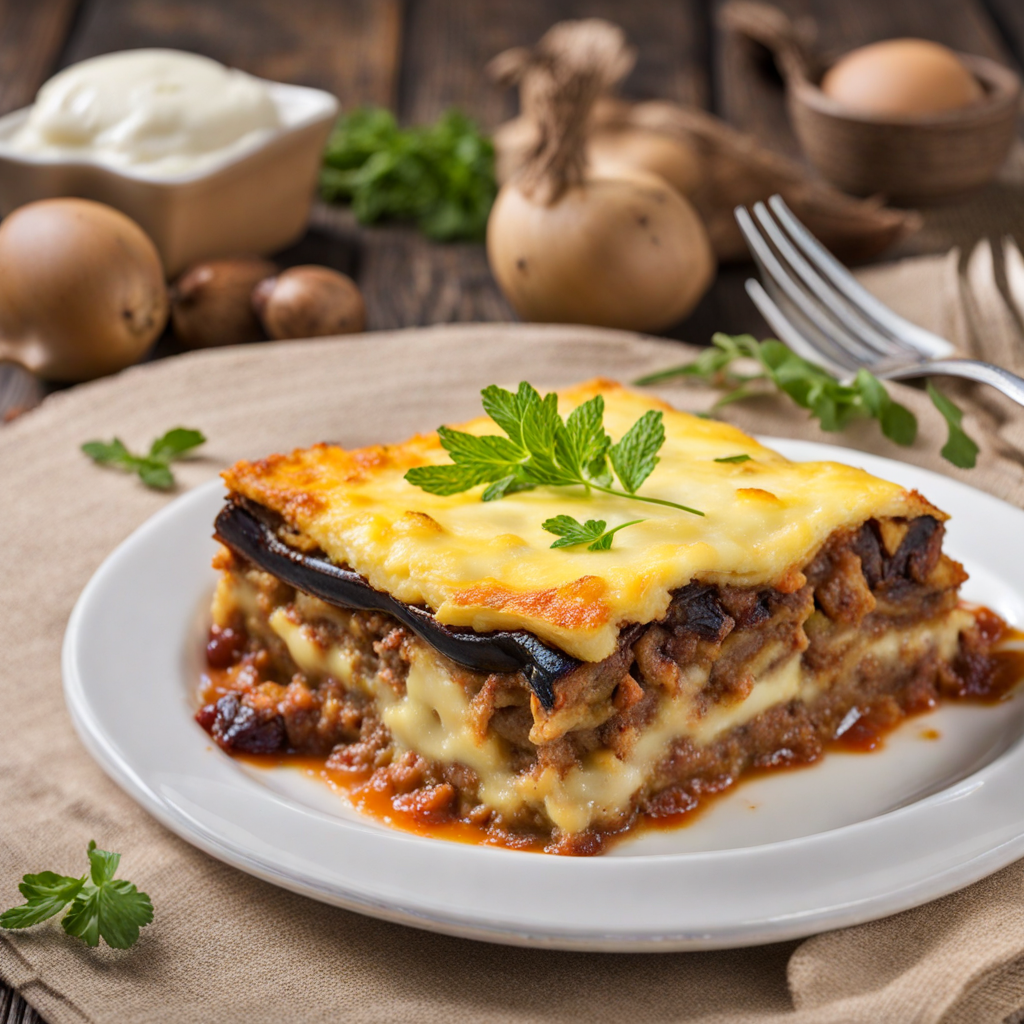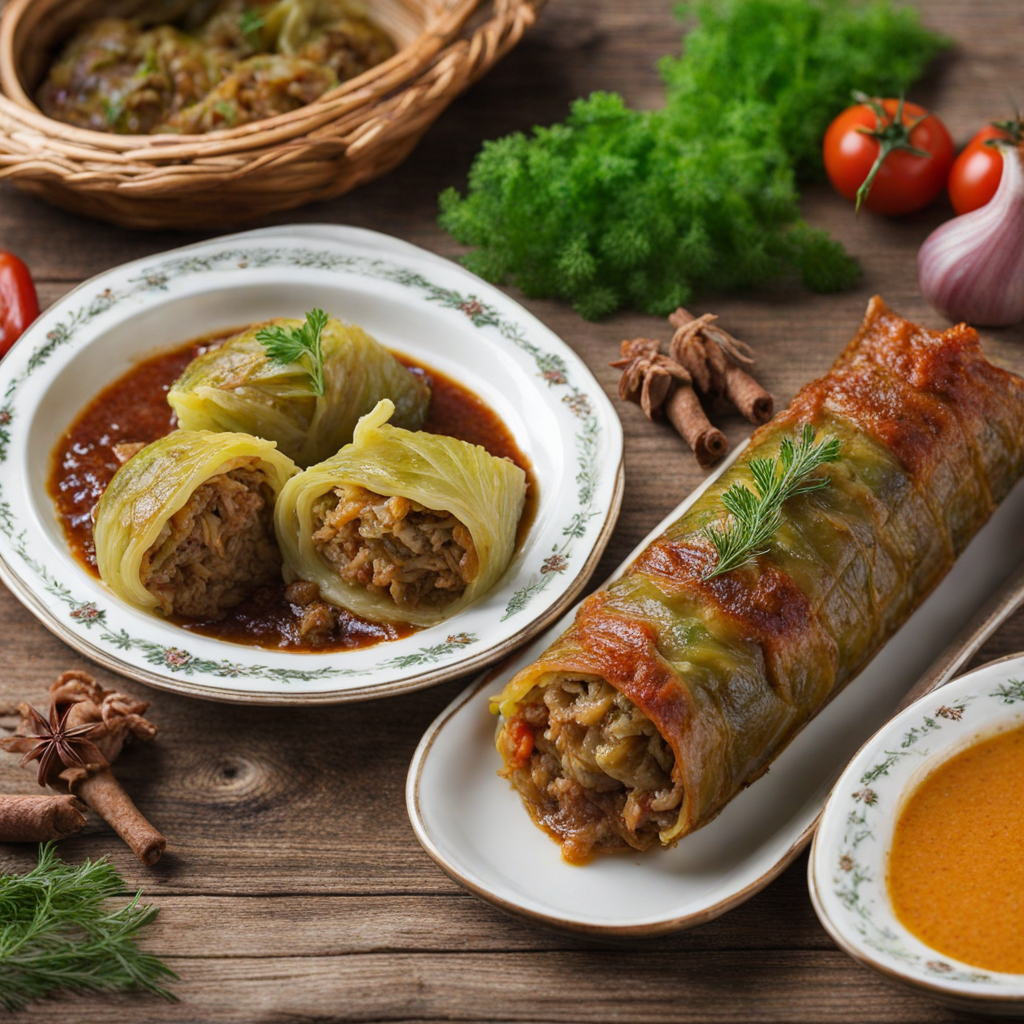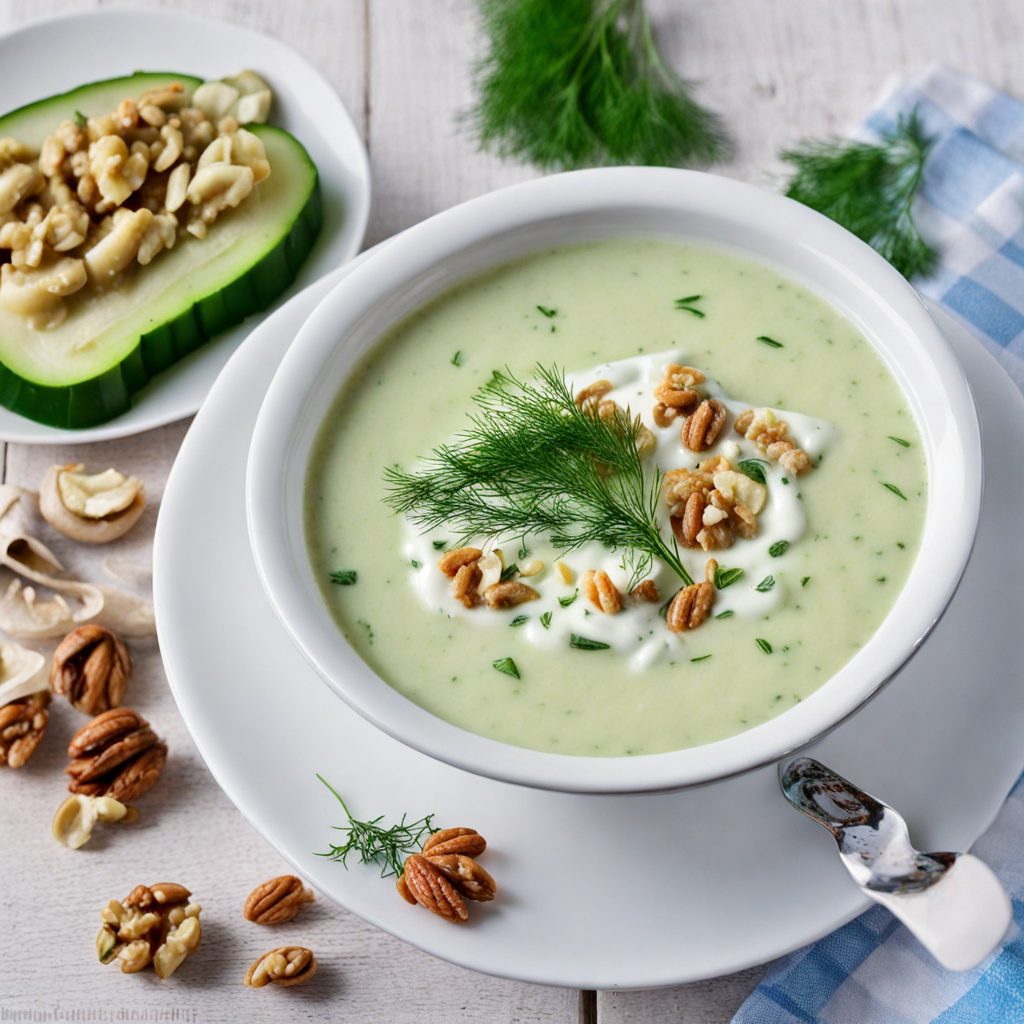Moussaka
Moussaka is a traditional Bulgarian dish that beautifully blends layers of flavors and textures, showcasing the rich culinary heritage of the region. At its core, this hearty casserole features a base of sautéed eggplant, which is often complemented by ground meat—commonly beef or lamb—mixed with aromatic herbs and spices. The eggplant is typically sliced and lightly fried or baked to enhance its natural sweetness, creating a delicious contrast with the savory meat mixture. The combination of these ingredients is layered in a baking dish, forming a delightful harmony of flavors that is both satisfying and comforting. What sets Bulgarian Moussaka apart is its unique incorporation of potatoes, which are usually placed at the bottom layer. These tender slices absorb the juices from the meat and eggplant, developing a rich, flavorful foundation. The dish is then topped with a creamy béchamel sauce made from milk, flour, and eggs, which adds a luscious, velvety finish. As it bakes, the sauce transforms into a golden, bubbling layer that beautifully contrasts the robust flavors beneath, making each bite a delightful experience. As you take your first taste of Bulgarian Moussaka, you'll be enveloped in a warm, comforting embrace of flavors that reflect the country's culinary traditions. The savory combination of the spiced meat, tender vegetables, and rich sauce creates a symphony of taste that is both hearty and indulgent. Often served with a side of fresh salad or yogurt, this dish invites you to savor the depth of Bulgarian cuisine, making it a must-try for any adventurous food lover seeking to explore new and exciting flavors.
How It Became This Dish
The History of Мусака in Bulgaria: A Culinary Journey Introduction Mусака, or moussaka, is a dish that has transcended borders and cultures, becoming a beloved staple in various Mediterranean and Balkan cuisines. While the most famous versions hail from Greece and the Middle East, Bulgaria’s interpretation of moussaka carries its own unique history, cultural significance, and evolution that reflect the country’s rich culinary heritage. This essay delves into the origins of moussaka, its cultural importance in Bulgaria, and how it has developed over time. Origins of Mусака The origins of moussaka can be traced back to ancient times, with its roots in the Middle Eastern culinary tradition. The term "moussaka" is derived from the Arabic word "musaqqa‘a," which means "chilled." This early version was a simple layering of ingredients, primarily eggplant and spiced meat, that was often served cold. The dish made its way into the Greek culinary repertoire during the Byzantine Empire, where it evolved into more elaborate forms, incorporating béchamel sauce and potatoes. In Bulgaria, the dish has been adapted to local tastes and ingredients, resulting in a version that is distinctly different yet undeniably connected to its Mediterranean cousins. Bulgarian moussaka typically features minced meat (often pork or beef), layers of potatoes, and sometimes eggplant. The addition of yogurt or sour cream gives it a creamier texture and a tangy flavor that sets it apart from other variants. Cultural Significance Mусака holds a special place in Bulgarian cuisine, often associated with home-cooked meals and family gatherings. It is a dish that resonates with nostalgia, evoking memories of family gatherings around the dining table, where the comforting aroma of baked moussaka fills the air. In Bulgaria, it is common for families to prepare moussaka in large quantities, ensuring there are plenty of leftovers to be enjoyed in the following days. The dish is also significant during national and religious holidays. For instance, it is often served during Easter and Christmas celebrations, where it symbolizes abundance and hospitality. Bulgarian moussaka is more than just a meal; it embodies the spirit of togetherness and the importance of sharing food with loved ones. Development Over Time Throughout the centuries, Bulgarian moussaka has undergone various transformations, adapting to changes in agricultural practices, economic conditions, and culinary influences. The post-World War II era marked a significant shift in Bulgarian cuisine, as the country faced food shortages and the need for more affordable ingredients. This period saw the use of potatoes becoming more prevalent in moussaka, as they were a staple crop in Bulgaria and provided a filling base for the dish. In the late 20th century, as Bulgaria opened up to the world and embraced globalization, the culinary landscape began to diversify. Chefs and home cooks started experimenting with new ingredients and techniques, leading to modern interpretations of traditional dishes. While the classic recipe remains popular, variations such as vegetarian moussaka have emerged, catering to changing dietary preferences and promoting the use of seasonal vegetables. In recent years, the revival of interest in traditional Bulgarian cuisine has further solidified moussaka's place in the national culinary identity. With the rise of farm-to-table restaurants and a renewed appreciation for local ingredients, chefs are emphasizing the importance of quality produce and sustainably sourced meats. This has led to a renaissance of authentic Bulgarian moussaka, prepared with fresh, locally sourced ingredients, emphasizing the dish's connection to the land. Regional Variations Bulgaria’s diverse geography and climate have influenced regional variations of moussaka within the country. In the warmer southern regions, for instance, cooks may favor the use of eggplant over potatoes, aligning the dish more closely with its Mediterranean roots. Conversely, in the northern regions, where potatoes are more abundant, they are the primary ingredient. Another notable variation is the use of spices and herbs. While traditional moussaka recipes often include paprika and black pepper, some regions may incorporate local herbs such as dill or parsley to enhance the flavor profile. Additionally, the type of meat used can vary, with some areas favoring a mix of lamb and beef, while others may opt for chicken or turkey, reflecting local tastes and economic circumstances. Modern Interpretations and Global Influence As culinary tourism grows and cultural exchanges increase, Bulgarian moussaka has begun to gain recognition beyond its borders. Food enthusiasts and chefs around the world are discovering the rich flavors and comforting nature of this dish, often incorporating it into fusion menus that celebrate Balkan and Mediterranean influences. Social media has played a crucial role in this global sharing of culinary traditions. Platforms like Instagram and TikTok have allowed home cooks and professional chefs alike to showcase their interpretations of Bulgarian moussaka, often sparking interest and enthusiasm for this traditional dish. The rise of food blogs and cooking shows that explore regional cuisines has also contributed to the revival and appreciation of moussaka as a symbol of Bulgarian culture. Conclusion Mусака is more than just a dish; it is a reflection of Bulgaria’s history, culture, and culinary evolution. From its ancient Middle Eastern roots to its modern interpretations, moussaka tells a story of adaptability, resilience, and the importance of food in fostering community and connection. As Bulgaria continues to embrace its culinary heritage while navigating the complexities of globalization, moussaka remains a beloved symbol of tradition and innovation. Whether enjoyed in a family home, at a festive gathering, or showcased on international menus, Bulgarian moussaka is a testament to the enduring power of food to bring people together, celebrate culture, and preserve history.
You may like
Discover local flavors from Bulgaria







